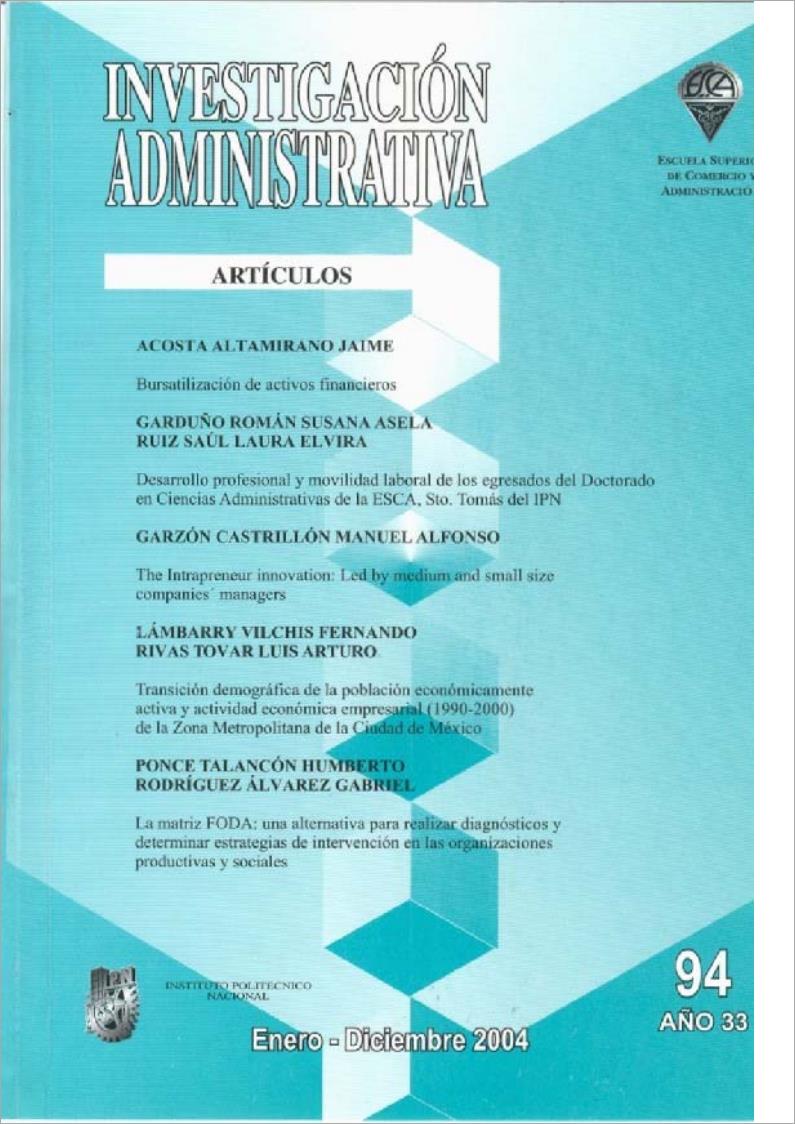The SWOT matrix: an alternative for conducting diagnoses and determining intervention strategies in productive and social organizations
Main Article Content
Abstract
This article makes reference to SWOT (Strenghts, Weakness, Opportunities, Threats) analysis, it means the identification of strengths, weaknesses, opportunities and threats, procedurement to follow, factors of most influence.
Article Details

This work is licensed under a Creative Commons Attribution-NonCommercial 4.0 International License.
References
Dale, McConkey (1988). Planning in a Changing Environment, Business Horizons 31, No.5
David, F. (1997), Conceptos de Administración Estratégica, Editorial Prentice Hall Hispanoamericana, S.A., 5 Edición, pp. 353.
J. M. Bryson; P. Bromiley (1993). Critical Factors Affecting the Planning and Implementation of Mayor Producís, Strategic Management Joumal 12, No. 5.
Hax, Arnold C. Majluf, Nicolás S. (1984). Strategic Management: An Interactive Perspective. USA: Pren tice Hall.
Henry, Harold W. (1980). Appraising a Company's Strengths and Weaknesses. Managerial Planning.
Poder, M. (1998). Técnicas para el Análisis de los Sectores Industríales y de la Competencia, Editorial CECSA, México, 25 reimpresión, pp. 407.
Stevenson, Howard H. (1976). Defining Corporate Strengths and Weak nesses. Sloan Management Review 17. No. 2.
Thompson et al. (1998). Dirección y Administración Estratégicas, Conceptos, casos y lecturas. Edición especial en español. México. Mac Graw Hill Inter Americana y editores.
Vandenberg, Robert J. E. Larence, Charles (1992). Examining the Causal Order of Job Satisfaction and Organizational Commitment. Journal of Management 18, No. 1
Wilhelm, Warren R. (1992). Changing Corporate Culture or Corporate Behavior? How to Change Your Company. The Executive VI, No.4.
Y. Allarie; M. Firsirotu (1985). How to Implement Radical Strategies in Large Organizations. Sloan Managem.

